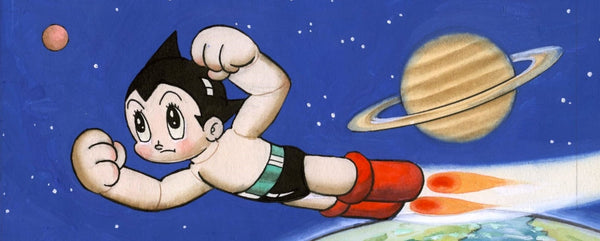Minoru Nonaka
Biography | Minoru Nonaka
Biography | Minoru Nonaka
Couldn't load pickup availability
Minoru Nonaka (1957–) is a fascinating figure in the world of manga, particularly for his deep connections to tokusatsu, Japan’s live-action special-effects genre.
He made his professional debut in 1973 while still in high school and soon became assistant to the legendary Go Nagai at Dynamic Productions, placing him at the heart of the creative explosion of 1970s manga and anime at an exceptionally young age.
From the very beginning of his career, Nonaka worked across media, becoming best known for his manga adaptations of major tokusatsu classics including Gavan, Shaider, Jaspion, Space Battleship Yamato, and Ultraman. He did far more than simply adapt: he often contributed character designs and early planning drafts, a sign of the trust studios placed in his understanding of the genre. These adaptations of tokusatsu and mecha series formed the core of his production throughout the 1980s.
Alongside this work, Nonaka explored several original projects such as Be-Born and Airwolf, and he received artistic recognition early in his career. In 1980, he won the 12th Akatsuka Prize, followed in 1981 by a special mention at the Kodansha Newcomer Manga Award for Murder Game.
Among his many projects, one of the most notable is undoubtedly Dennō Keisatsu Cyber Cop. Nonaka contributed to the initial character designs for this tokusatsu series, credited under the name Shigeru Pro, and produced three manga versions of the franchise.
He also played a major role in the serialization of Kamen Rider SD (1993–1997), a key part of the 20th anniversary multimedia celebration of the Kamen Rider franchise. His episodes translated the classic universe into the still popular comical, cartoonish SD style.
Another significant work is his Gekisō Sentai Carranger manga adaptation (1996–1997). The original show centered on cars and the booming popularity of Mini 4WD toys and Nonaka successfully captured this automotive energy and humor on paper.
In 1997, Saban Entertainment re-used the original Japanese action sequences, costumes, and fight scenes from Carranger, combining them with newly filmed American footage to create Power Rangers Turbo, the fifth season of the Power Rangers franchise.
Beyond his professional achievements, Nonaka is deeply committed to the social power of manga. After the 2011 earthquake, he revived his character Kaku Ninja Manmaru to support children in affected areas, organizing “doodling live” events where young participants could draw alongside him. More recently, he developed environmentally themed works such as Future Environmental Defense Ecologiger, reflecting his interest in ecological issues and educational storytelling.
His career spans decades and genres, from child-friendly stories to mecha, eco-heroes, tokusatsu tie-ins, and community-focused projects. In addition to creating manga, Nonaka serves as an associate professor at Sōzō Gakuen University. He remains active on social media, fairs, conventions, and public events, regularly engaging with fans and mentoring new artists. Deeply involved in regional cultural initiatives such as the Iwate Manga Project, he continues to promote manga as both an art form and a means of social connection.
Minoru Nonaka’s career is remarkable not only for its longevity and artistic skill but also for its unique blend of entertainment, social engagement, and education. From young assistant to mentor, lecturer, and socially conscious creator, his work illustrates the many ways manga can touch both the imagination and the heart.
Share










